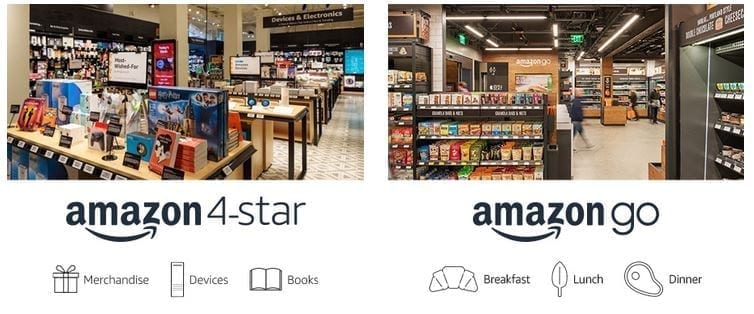Comeback physical store as added value in total customer experience continues
The modern consumer effortlessly switches from online and mobile to the shop floor. In a short time, he embraces all new technologies that are available within retail to facilitate the customer journey. In addition, the added value of the physical store in the total customer experience increases. The store's rebirth shows that thinking in separate channels is a thing of the past. What counts is the total retail ecosystem.
This is one of the main conclusions in a paper by Deloitte Digital, Connected Stores - Transforming store fleet through technology. The publication, which still counts as a leading market exploration, contains interesting reflections on the current and future physical store. The role of innovation and technology on the shop floor is also discussed. It is clear that the offline channel is experiencing a comeback. But not in the traditional guise, but as a kind of flagship and laboratory within the overall omnichannel strategy. Technology dominates in the brick shop 2.0. Not the offer is central, but the experience that cannot be offered online.
Physical store, but different
The vacancy in many Dutch shopping streets conjures up a different picture. Nevertheless, the comeback of the physical store – often in pop-up form – is increasingly taking shape within the landslide that has hit retail since the introduction of Ecommerce experienced in the 1990s. Starring: Amazon in the US and Alibaba in China, the disruptive one-man initiatives that grew into billion-dollar global companies.
To illustrate, Deloitte shows a nice timeline. In 2012, Ecommerce took such a flight that the physical shop was declared dead. As online and offline were considered completely separate channels, the curtain fell for many a traditional retailer. Then, in 2014, a new trend presented itself: Omnichannel Retailing. 'Ecommerce is not eating retail', wrote the leading Harvard Business Review. The trend was prompted by the consumer. Because he did not understand why retailers and brands should not be accessible via multiple channels, online and offline. Retail adapted to this and invented the Omnichannel Experience.
The consumer does not believe in separate sales channels
Since then, one concept has become an indispensable part of retail marketing: the customer journey. Within that customer journey, every channel and every one serves touchpoint blend seamlessly. The modern customer is channel agnostic. That is, customers do not think in different distribution channels, but believe that there is such a thing as one pleasant journey leading to the ultimate purchase. Although online ordering is by far the most popular, the ability to see and feel products and to make contacts contribute significantly to the purchase. Both retailers and marketers will increasingly have to work on an integrated approach to the digitally flexible customer, as a Frankwatching blog recently described it.
In summary, this leads to the rebirth of the physical store that has been involved worldwide since 2017. In the meantime, all signals point to a definitive comeback of stone and cement in the retail landscape. The drivers? Those are again Amazon and Alibaba. Both are expanding their Ecommerce empire with physical sales and contact points in a variety of markets.
Amazon as a driver of the rebirth of the physical store
Western Ecommerce market leader Amazon launched its retail concept in 2017 Amazon Go, supermarkets without a cash register or staff, adapted to scanning with smartphones and using in-store robots. Amazon previously had physical bookstores. In 2019, the Amazon network had more than six hundred brick stores, which together generated quarterly sales of approximately $ 4.5 billion. Sales increase by 1% per year. That may seem modest, but by conquering new markets and engaging consumers even more in this way, Amazon's power in the global retail landscape continues to grow.
And that's what it is about: opening up new markets and binding customers to your brand by offering them the most complete customer experience you can imagine. Online and offline. That explains why a growing number of former online-onlyplayers follows Amazon's example and chooses the combination of clicks & bricks. Young consumers in particular are forcing retailers to do this. They want to be able to shop anytime and anywhere and hop seamlessly from webshop to social media to physical store.
Human interaction provides added value to the customer journey
That physical store must have unique qualities that fit into that total customer journey. It's all about the experience; to see, feel and connect. Retailers are given the opportunity to interact directly with the consumer. This provides useful feedback and makes the store a playground for experimenting with innovative products and concepts. Human interaction, in combination with advanced technology, will make a major contribution to the bond with brands and concepts, the experts predict.
The experience in the physical store and the experience online reinforce each other and together ensure a customer journey that recognizes no boundaries between the various channels. With the absolute condition that all these channels together offer a consistent customer and brand experience. Customer data and new technologies that play the role of many touchpoints connect and integrate key roles in one network. Those technologies are there. Time to make choices. That is a challenge in itself. EcommerceResult helps. With independent advice on groundbreaking Ecommerce IT solutions.


